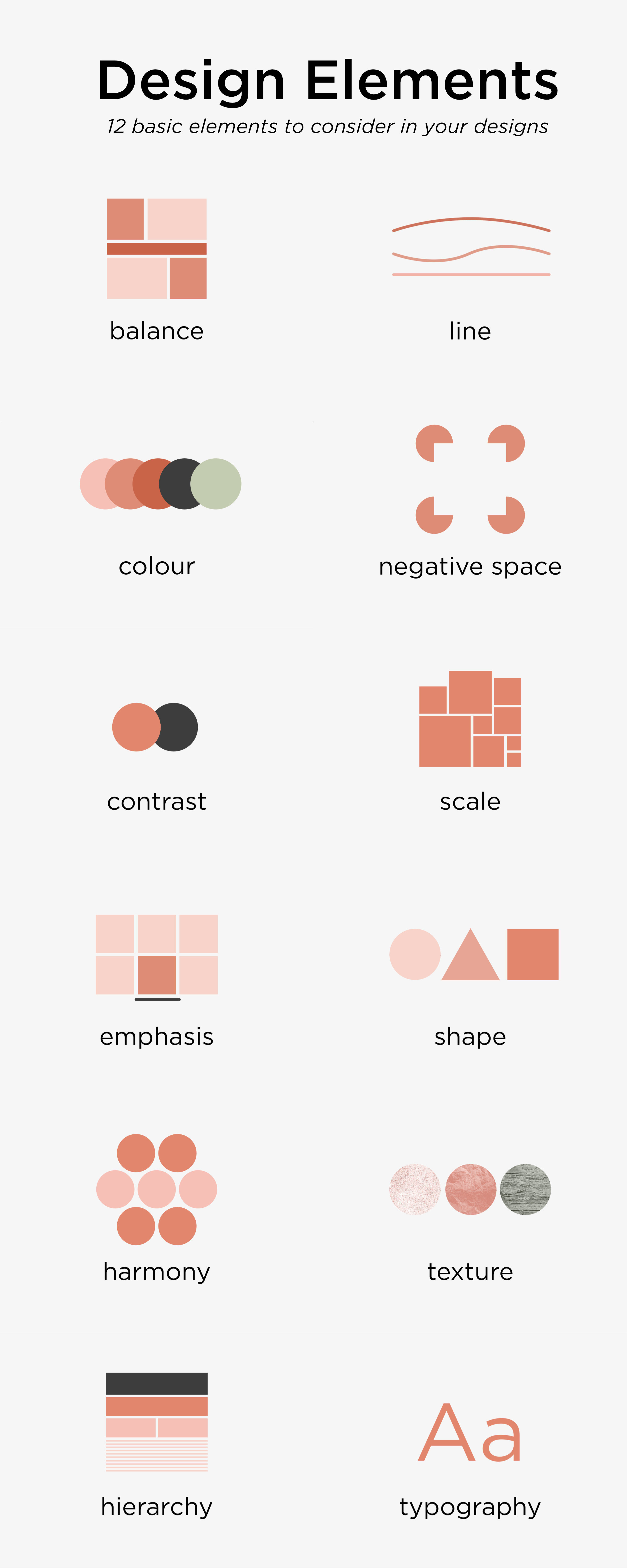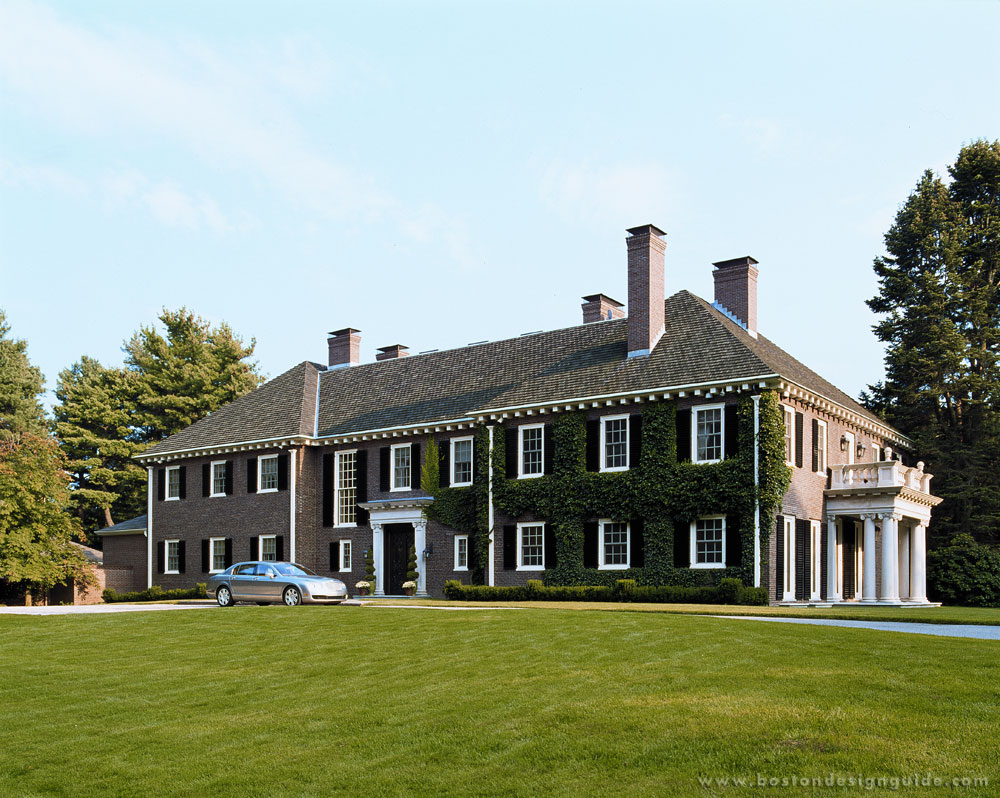
Design principles are fundamental pieces of advice for you to make easy-to-use, pleasurable designs. You apply them when you select, create and organize elements and features in your work. Knowing these elements and principles will help you see beyond what's tangible and produce more professional designs. To summarize, every piece of work uses point, line, shape, form, and color elements. These are the building blocks that form the visuals and structure.
Add Vibrancy with Bold Color Tiles
Space is the dimension of height, depth and width within which all things exist and move. Space or Empty space or White space or Negative space are alias given to describe intensional spaces made in design. People tend to fill up empty spaces to get maximum benefit out of it but rather know the importance and beauty of it. I’ll leave you with some logos in which space is incorporated as an integral part of the design. Instead of pointing out the use of space in each, I’ll make a few general comments and then let you explore the spaces for yourself.
Formaldehyde-free cabinets
So, we should bear in mind that the power of white space goes far beyond aesthetics and can be strategically used to further more enhance business related goals and making users engaged. The colors and whitespaces used to make the content separate out from each other is awesome and well achieved. In Graphic design, we generally see the term Negative space used. The graphical element used in graphics with any hidden shapes or identity inside design which can completely change the aesthetic of the element designed.
Easiest Online Businesses to Start: Your Ultimate Guide
It sets a context for how your design communicates and how it will be interpreted. Excited to create your next design piece, but don’t have enough time and energy? Click the button below to choose a template from the Renderfoest Graphic Maker and edit it.
Cropping: using positive space to draw attention to a specific element
The area could be different in size, color, texture, shape, etc. Learning the elements and principles of design is essential to becoming an exceptional artist or designer. This beautiful painting feels pleasant to the viewer's eye yet has so much going on.

Want to Learn More About UX Design & Boost Your Skills?
The vibrant hues and intricate patterns of Moroccan tiles enhance the appeal of any kitchen backsplash, infusing it with a distinctive blend of geometric motifs and rich colors. These vibrant tones not only elevate the aesthetic but also imbue the kitchen design with a sense of luxury and warmth. Who says that patterned tiles are solely reserved for backsplashes and floors?
All open-source articles on design principles
Versatile space as a meeting point. WERK Restaurant by BEEF ARCHITEKTI The Strength of Architecture From 1998 - Metalocus
Versatile space as a meeting point. WERK Restaurant by BEEF ARCHITEKTI The Strength of Architecture From 1998.
Posted: Sat, 24 Jun 2023 07:00:00 GMT [source]
Unity has to do with creating a sense of harmony between all elements in a page. A page with elements that are visually or conceptually arranged together will likely create a sense of unity. Colour theory is a branch of design focused on the mixing and usage of different colours in design and art. In colour theory, an important distinction exists between colours that mix subtractively and colours that mix additively. If functional and aesthetic elements don’t add to the user experience, forget them. Franks Spillers’ design checklist is an example of customized design principles for mobile user experience (UX) design.
Create Focus with Space
They identified a set of laws that address the natural compulsion to find order in disorder. According to this, the mind “informs” what the eye sees by perceiving a series of individual elements as a whole. The space element of design, often overlooked, is an essential aspect of creating effective and aesthetically pleasing designs. Its ability to create emphasis, balance, and rhythm makes it a fundamental principle in the world of design. Whether it’s in logos, websites, or any form of visual communication, understanding and mastering space is crucial for any designer. Visual design is about creating and making the general aesthetics of a product consistent.
Emphasis in design principles refers to intentionally highlighting specific elements to draw attention and create a focal point. By manipulating contrast, color, size, or placement, designers can guide the viewer's eye to the most crucial parts of a composition. Emphasis ensures that certain design elements have more visual weight, allowing them to stand out and capture interest. This principle helps convey the main message, evoke emotions, or guide user behavior.
When you have a page of text, every letter is positive space, but so are areas of text in paragraphs or columns. If you cover every part of a page with words, eliminating indentation, spacing, margins, or space between letters, you have a horrible jumble of positive space. The spacing between text elements also contributes to the messages communicated through the design. Larger spaces can shape the viewer's experience by slowing their reading process, thus highlighting individual words and phrases. Smaller spaces, by contrast, allow the audience to immediately process the entire message communicated by design.
Enhanced with bio-pigments from harvested algae, each tile boasts a visually striking, non-repeating pattern, resembling crawling organisms. Not only visually captivating but also 100% sustainable and biodegradable. Redefine the look of your kitchen space with MYCO-ALGA tiles—a conversation piece that’s both eco-friendly and stylish. If you prefer to avoid a stark contrast, the hexagonal patterns can harmonize with the off-white overhead and base cabinets. The wall tiles feature a blend of plain and patterned tiles to achieve a subtle appearance, while the hexagonal grid forms the underlying pattern. “Oftentimes when people buy large SUVs they have to take a lot of people and cargo, and it’s important that we create that flexibility for comfort and space,” Jenkins said.
Using recognizable shapes for various functions maintains visual consistency. Users know that rectangles are for buttons, cards, images, or videos; circles for avatars or badges; and arrows for navigation or the Play button. If you want users to intuitively know how to use your interface, stick to common shapes.
In user experience (UX) design, minimizing users’ cognitive loads and decision-making time is vital. The principles include contrast, balance, pattern, variety, and unity. These guidelines use elements to tell a story or atmosphere and help blend the elements effectively. It's when every design element and principle comes together as one, creating harmonious flow and tranquility. Lines are the most essential elements in design, forming a distinct mark between two points. Lines can be straight or curved, thick or thin, and are necessary for creating shapes.
Artists create illusory spaces through the use of lines and the placement of objects within a composition. By varying the direction and distance between lines, for example, the graphic artist can draw the viewer's eye to an imaginary point in the background of the design. In addition, layering objects provide additional visual interest and depth by placing objects in front of or behind each other.

No comments:
Post a Comment